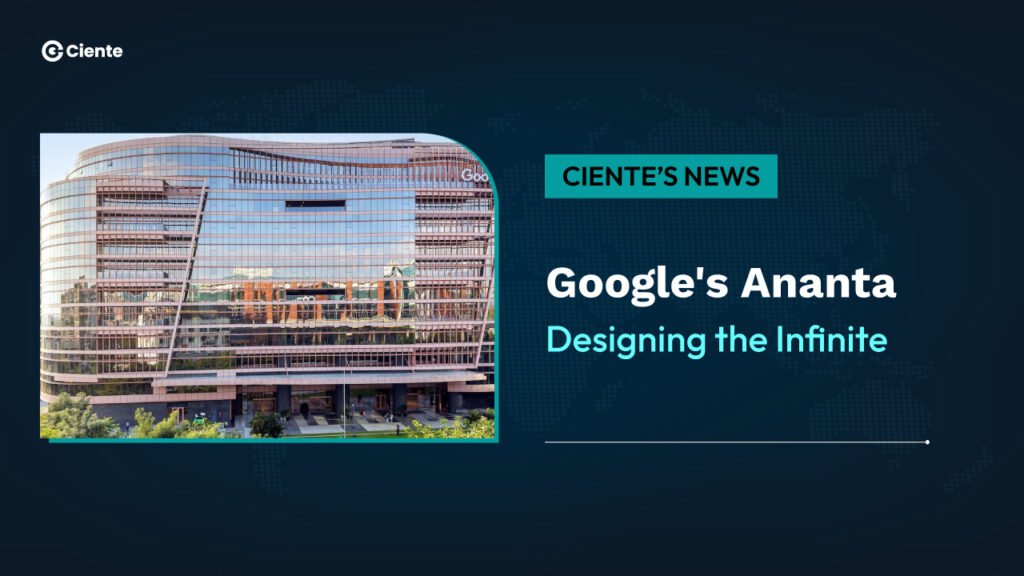Google designs a workplace to foster creativity, innovation and inspire it employees for the better.
Google has unveiled its newest office in Bangalore, India. Designed by Broadway Malyan, it is nothing short of an architectural marvel.
It is Google’s one of the largest global campuses. According to Broadway Malyan, the business hub is a 12-storey building that accommodates over 7,000 employees.
The term Ananta is derived from the Sanskrit, meaning limitless or infinite.
The office is built to foster connectivity between people and for them to draw creative insights and innovations from each other and themselves. As Google puts it, “Ananta is designed to connect people in ways that spark breakthrough ideas and innovation. The building’s sculpted form is more than striking architecture—it improves views, provides access to natural light, and creates an intimate layout for teams to come together.”
The working floors in Ananta are organized like a city grid with networks of streets for easy navigation, neighborhoods, and smaller nooks and booths for freedom and focused work.
And in the heart of this architectural wonder is the Sabha. A “town hall” for collaboration and gathering.
The site is also sustainable, recycling 100% of its wastewater and harvesting hundreds of liters of rainwater on-site.
Research shows that well-designed workspaces boost productivity and retention, and with Ananta, Google is betting on an environment that fuels innovation, collaboration, and long-term business impact.
Designing creativity and innovation.
Design has driven us forward. People love spaces that make them feel inspired.
Ananta isn’t too far away from this ideal. It is a beautiful and sprawling structure that brings forth creativity and innovation from its employees- a place for growth and harmony.
Are high-performing offices becoming predominantly places of cultural growth? The trends seem to say so. As innovation drives forward the winners of today and tomorrow, it will become increasingly vital for spaces to reflect this.
But it shouldn’t just be designed as a façade. The ideal should be lived— these spaces must be used to their fullest as epitomies of human growth and harmony.

